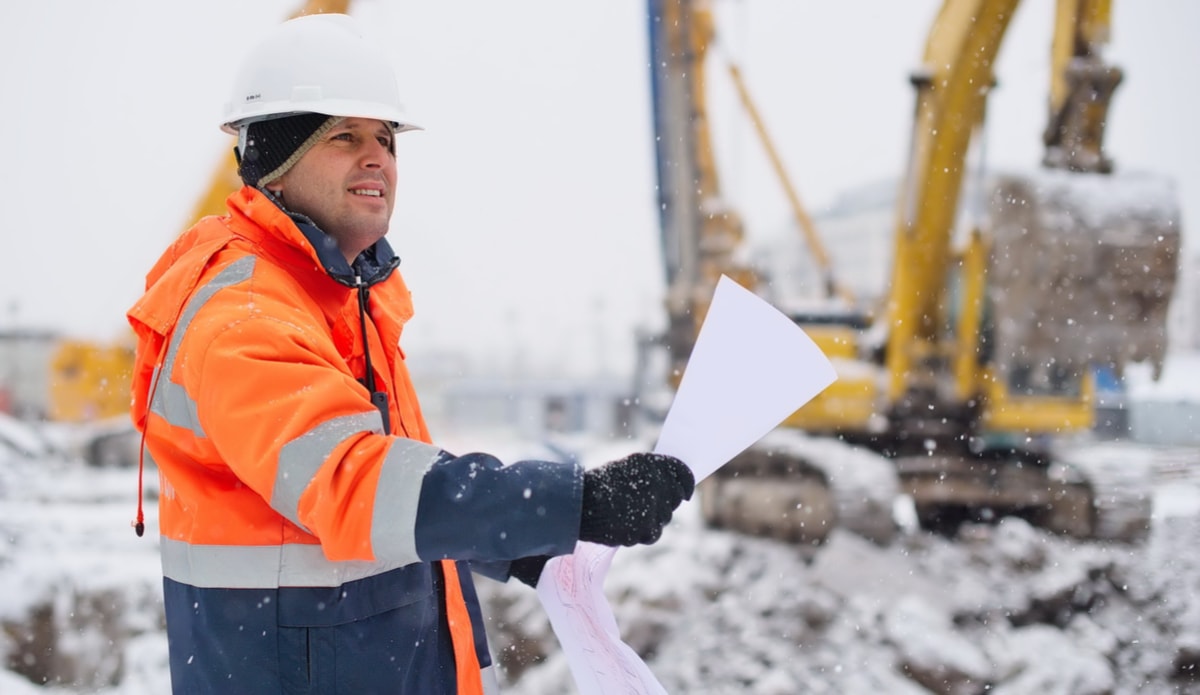Working Through Winter: Preparing Construction Worksites

Winter Construction Safety > Preparing Construction Workers
In this series of posts, we’ve discussed some of the major ways that construction businesses can minimize additional injury risks in winter. One such way to do that is limiting exposure to the elements, which can be brutal this time of year. We’ve also explored the proper attire that your employees should wear when working outdoors in extreme cold to keep themselves comfortable and protected. Now, we’re going to dive deeper into ways you can ensure the worksite is prepared for safety and comfort. Before reading on, protect your operation and your employees with a Santa Fe Workers’ Compensation insurance policy.
Prevent slips on ice.
OSHA continues to focus on fall protection issues, and that doesn’t change whether the employee is teetering several stories above the ground on scaffolding or marching across ice at ground level. The agency suggests employees wear footwear with adequate traction when working at winter construction sites to reduce the chance of slipping. In addition, OSHA said short steps and a slower walking gait can go a long way in maintaining one’s balance, says Construction Drive.
Melt the ice.
Make sure walkways and sidewalks have been coated with salt to prevent slips. This will also help to melt the ice so that your workers aren’t as prone to slipping, especially when carrying heavy equipment and machinery.
If snow needs to be shoveled, make sure whoever is doing it is able to handle the strenuous activity. The cold combined with the constant motion of scooping and throwing snow can be taxing on a body.
Preparing the vehicles.
It’s one thing to operate heavy vehicles in the summer, but it’s a completely different story to do this during a snowstorm. All employees should be adequately trained and have plenty of practice navigating icy roads. This can be done in an empty parking lot so that no one is injured.
Remember structural requirements.
If you’re working with concrete or bricks this winter, it’s important to follow the safety guidelines for doing so. Otherwise, the materials can fail if they are not prepared correctly.
For example, according to the Portland Cement Association, if concrete is to reach necessary strength levels, it can’t be allowed to freeze for the first 24 hours after being poured or placed. If the weather isn’t too severe, sheeting the concrete can ensure the required temperature and moisture necessary for curing. If not, then supplemental heating systems or enclosures must be brought in to maintain the integrity of the concrete.
This rule also applies to mortar mixtures for bricklaying, so ensure the structures are insulated with proper warming equipment to make sure they form properly.
About Daniels Insurance, Inc.
At Daniels Insurance, Inc., we have a unique understanding of the risks that businesses like yours face on a regular basis. With the backing of our comprehensive coverages and our dedication to customer service and quick claims resolution, your business will be fully protected. For more information, contact us today at (855) 565-7616.
